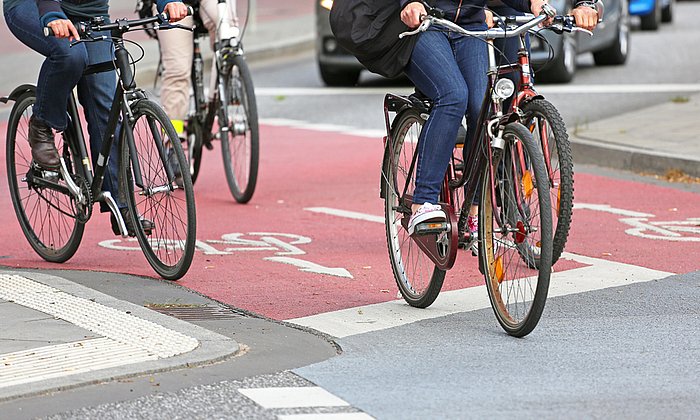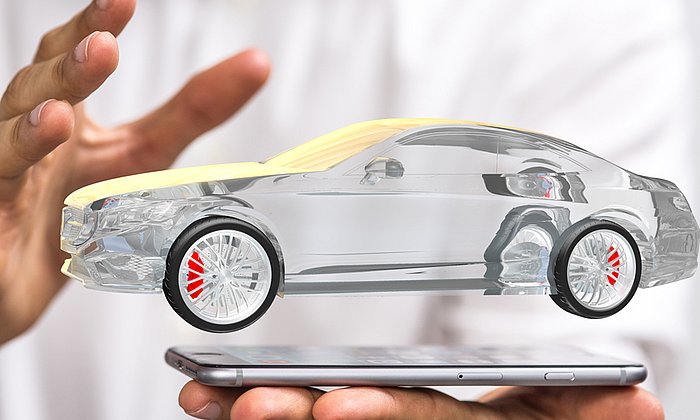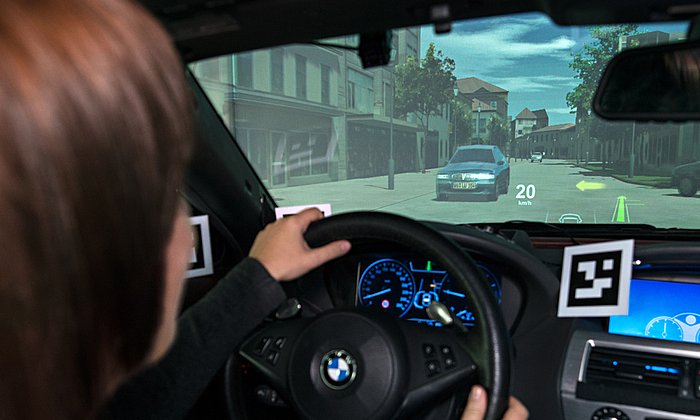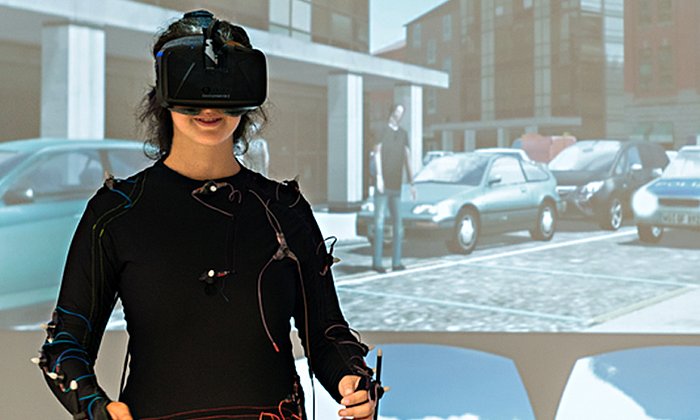Heavy truck traffic: "Platoon management" aims to restrain stopping at red lights
Dynamically phased traffic signals for trucks
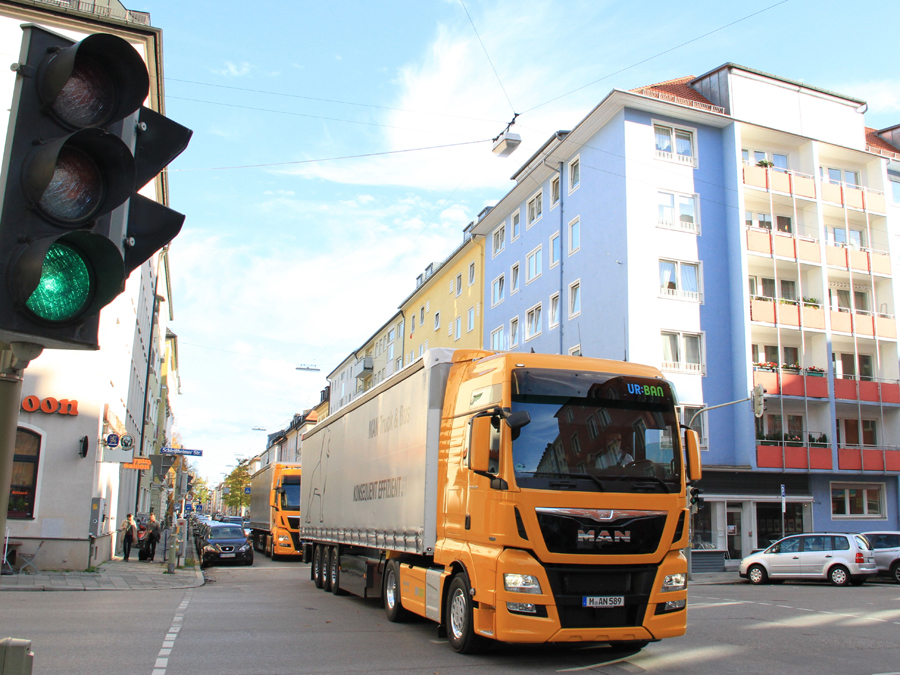
Traffic signal control in the city is designed for cars with no special attention paid to trucks. And that’s a disadvantage on roads frequently traveled by heavy trucks. "A truck takes disproportionately longer to start moving again after a red light than a group of cars of the same overall length," explains Prof. Fritz Busch, Chair of Traffic Engineering and Control at TUM. As a result, fewer vehicles can get through the lights during the green phase. At the same time, trucks usually produce more pollutant emissions and noise than cars do when stopped and accelerating again.
Three in one go
TUM researchers are working on this problem within the framework of the project "UR:BAN", which is concerned with developing driver assistance and traffic management systems for urban areas. The scientists are developing a "platoon management" system for trucks. The phasing of traffic signals is optimized in the process, enabling, for instance, the lights to stay green longer to let trucks go through. "This works by selectively creating platoons," says Busch. If the system detects three trucks, for example, approaching the traffic signals at a certain distance from each other, it will ideally let them all pass through the green time without having to stop.
"Of course, the overall traffic situation is taken into account as well," explains Eftychios Papapanagiotou, a member of the Chair’s academic staff. The lights are only phased to green for trucks if other road users are not going to be faced with unreasonably long waiting times.
Technical feasibility proven
This is how the concept works: Trucks are equipped with onboard systems that transmit the vehicle´s position and speed to a central computer. An algorithm is used at the traffic control center to optimize the timing of the signals.
Having sent a test truck along the route between the port and the highway in Düsseldorf, the researchers have already demonstrated that the concept is technically feasible. They also conducted additional tests with simulations.
In a subsequent step, the drivers could be given additional information, such as a speed recommendation. As Busch explains: "In doing so, we could attempt to bring the platoons closer together and thus optimize the process even further."
The researchers will be presenting their results on platoon management for trucks at the closing event of the joint project "UR:BAN" at the Düsseldorf Messe on October 7th. There they will provide insight into the technical realization of such a system and show how the algorithm works with the help of simulations.
Contact:
Jakob Kaths
Technical University of Munich
Chair of Traffic Engineering and Control
jakob.kaths@tum.de
Tel: +49.89.289.28596
https://www.vt.bgu.tum.de/en/home/
Technical University of Munich
Corporate Communications Center
- Stefanie Reiffert
- reiffert@zv.tum.de
- presse@tum.de
- Teamwebsite
